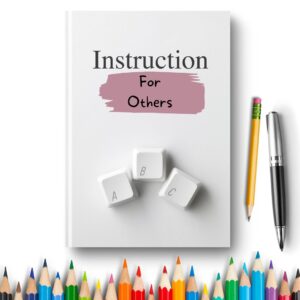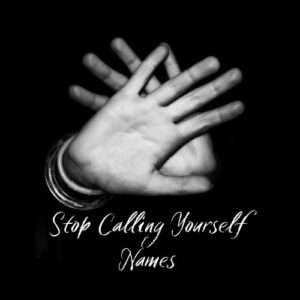Positive emotions are what we want to feel more; it’s the other end of the spectrum we struggle with.
Whatever you call them; negative, painful, uncomfortable, no one wants to feel them. Yet, they are an inextricable part of being human, and refusing to feel them makes it impossible to get on the other side.
What most of us learn early on is that negative emotions make those around us uncomfortable or scared so we find ways to tuck them away or hide them to preserve relationships and stay safe. No one tells us they’re a normal and expected part of life that we never grow out of. So we enter adulthood not knowing that feeling our emotions is a skill we can learn. Without this awareness, we can end up tyrannized by our emotions and stuck in painful spirals for days, weeks, or years.
As long as we live a human life, I’ve learned we can expect some degree of discomfort about half the time. Despite this, cultural norms lead us to believe we’re entitled to be happy all the time and if we’re not it means we’re doing it wrong or there’s been a terrible mistake. Paradoxically, it’s this expectation that throws off the natural balance of emotion and dials up negativity.
The majority of my clients tell me they want to be happy, peaceful, and grateful all the time. They’ve spent much of their lives trying to ignore, suppress and escape their feelings with little relief and destructive side effects.
Acceptance precedes change.
We can’t change what we refuse to accept.
Did you know that emotions have a natural beginning, middle, and end? Here’s the breakdown:
- Beginning: We become aware of uncomfortable physical vibrations in our bodies; an energy pattern of tension, temperature, pressure, pulsing, breathing rhythm, etc. These are generated by thoughts in the mind; some of which we are aware of, some not.
- Middle: We have a few options here: to react, resist or allow the emotion. This is where most of us get stuck. There are two simple steps you can follow to help yourself through this stage that are explained below.
- End: Getting to this stage requires willingness and practice. Here’s where you practice observing the vibrations in your body and actively attending to the thoughts in your mind until the discomfort subsides.
To move through these stages requires a willingness to be present with the discomfort of your emotions without shutting down or seeking escape or distraction. Not only does reacting or resisting not fix our emotions as we intend, they actually end up amplifying the intensity and perpetuate our suffering.
The reason we aren’t willing to feel is because we believe our negative feelings are both unbearable and threatening to our very survival. We misinterpret emotional pain as something dangerous and to be feared. This misunderstanding can lead us on an unending search for meaning and solutions in order to solve what we believe is the problem of our negative emotions. This pursuit of these kind of unanswerable questions is itself a form of resistance, which can keep us stuck in the middle stage of negative emotion with no end in sight.
Emotions are in fact neither a problem nor dangerous. Our bodies are designed to withstand intense negative emotions. To put it in perspective, all that’s happening in an uncomfortable, sometimes painful, energy pattern of vibrations and sensations. These usually involve changes in pressure, pulse, tension, breathing pattern, etc., When intense our bodies may shake and there may be tears or crying out. On a purely physiological level, It’s no worse than getting a shot or a dental procedure, taking a cold shower on a cold day, getting stung by a bee, or riding a roller coaster. Similar changes happen in our bodies in these instances, but most of us don’t think we would die if we experienced them.
2 Simple Steps to Feeling Negative Emotions
1.) First label the emotion. Name it. Start by Googling a list of negative feelings so you can be precise about your feeling and build your emotional vocabulary. Once you can put a name to your emotion, acknowledge it consciously to yourself in some way. I like to use, “this is just ______, it’s not a problem.”
2.) Describe the pattern, expression, and movement of physical energy and vibration out loud or in writing Where do you feel tension, pressure, temperature, pulsing? Be sure to note your breathing. Be specific, concrete, and descriptive. Keep your attention on what’s happening in your body and notice how the vibration moves and fluctuates under your awareness.
As an example, I know when I feel anxious my heart beats fast, I can feel it beating in my ears, my face gets flushed, I feel my gut contracting and my chest feels tight. I sweat, my mouth gets dry, I swallow a lot and the muscles in my shoulders & arms get braced and tense.
When you are able to label your experience and get present with your body in this way, you’ll notice an almost immediate reduction in the intensity of the emotion.
Here’s why:
1.) Focusing attention on your body keeps you grounded.
2.) It prevents the cognitive overload of racing thoughts.
3.) It signals to your central nervous system that there’s no danger.
4.) You break down the experience into more manageable parts. It’s understandable to recoil in the face of something dangerous. But when identified as the sum of its parts: some sweating, heat, and tears, it’s far less frightening.
Try this strategy next time you notice having a negative emotional experience. You won’t have to wait long; emotions are always fluctuating as a balance of positive and negative. As The Mandalorian would say, “This is The Way.”



